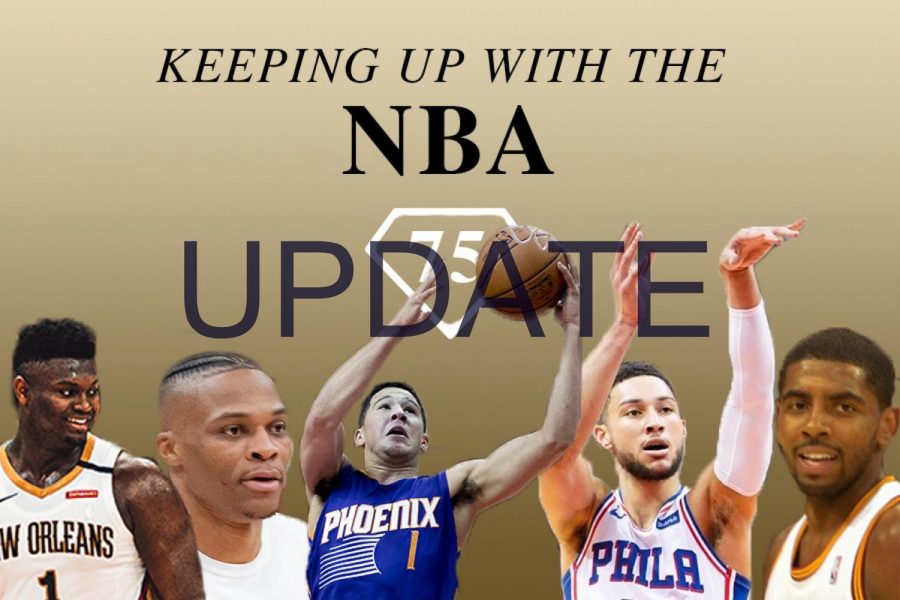New season, new rules, new era for the NBA?
The NBA’s latest rule change for the 2021-22 season will have a significant impact on the league’s brightest stars.
The 2021-22 season has not only been full of drama, but it also brought a rule change on fouls. The new rule makes it harder for an offensive player to deliberately draw a foul. (Staff Illustration by Ryan Kawahara, Images via Wikimedia Commons)
November 22, 2021
Before the start of the 2021-22 NBA season, the league announced a significant rule change amending the officiating guidelines on “ … overt, abrupt or abnormal non-basketball moves by offensive players with the ball in an effort to draw fouls.”
This change was in response to a trend of players on offense who initiated contact against defenders in an attempt to draw cheap fouls with no intention of scoring. While this was a well-received update, many fans remained skeptical about its implementation. It became clear through the first few weeks of the season that this was a great change for the league.
Basketball in the ’80s and ’90s conjures scenes of the “Bad Boys” Detroit Pistons’ aggressiveness in the paint, the hard-nosed battles between the Boston Celtics and Los Angeles Lakers in the NBA Finals, and the resilient nature of Patrick Ewing’s New York Knicks. Physicality has always been an essential element of basketball, but its prominence has diminished over the past decade because officials became quicker to blow the whistle. Players took advantage of this shift in officiating. Flopping — the exaggeration of contact with the intention of drawing a foul call — became the new normal.
With the new rule change, the NBA could see a return to its past physicality. The expectation isn’t to replicate the NBA of decades before. But fans should expect to see defenders put a hand on their opponents without getting called for it.
To better demonstrate how this league charge affects play, we can look at how superstar James Harden has been so successful at getting calls throughout his career. Harden frequently initiates contact on the perimeter, only to then quickly chuck up a shot to draw a foul and a trip to the free throw line. When Harden drives to the hoop, he often deliberately tangles his defender’s arm with his own to draw a shooting foul. Getting in front of the defender, he stops abruptly, forcing them to run into him.
From the 2014-15 season to the 2019-20 season, Harden averaged over 10 free-throw attempts per game, in large part through these moves. They shouldn’t be considered a “basketball move” — Harden isn’t making real attempts to score. Therefore, it has been refreshing to see that referees haven’t been rewarding Harden’s playstyle this season.
The biggest reason this ruling has been successful is because it changes the role of the NBA’s referees. Before the change, referees were viewed by players as parts of the game they could manipulate to their advantage. The capacity to draw a foul was as important to Harden as his shooting ability. After the change, officials are viewed as outside forces that only interfere when necessary. Officials no longer exist to bail players out. Now, they’re just there to let the players play.
A version of this article appears in the Nov. 22, 2021, e-print edition. Contact Daniel Haas at [email protected].
























































































































































